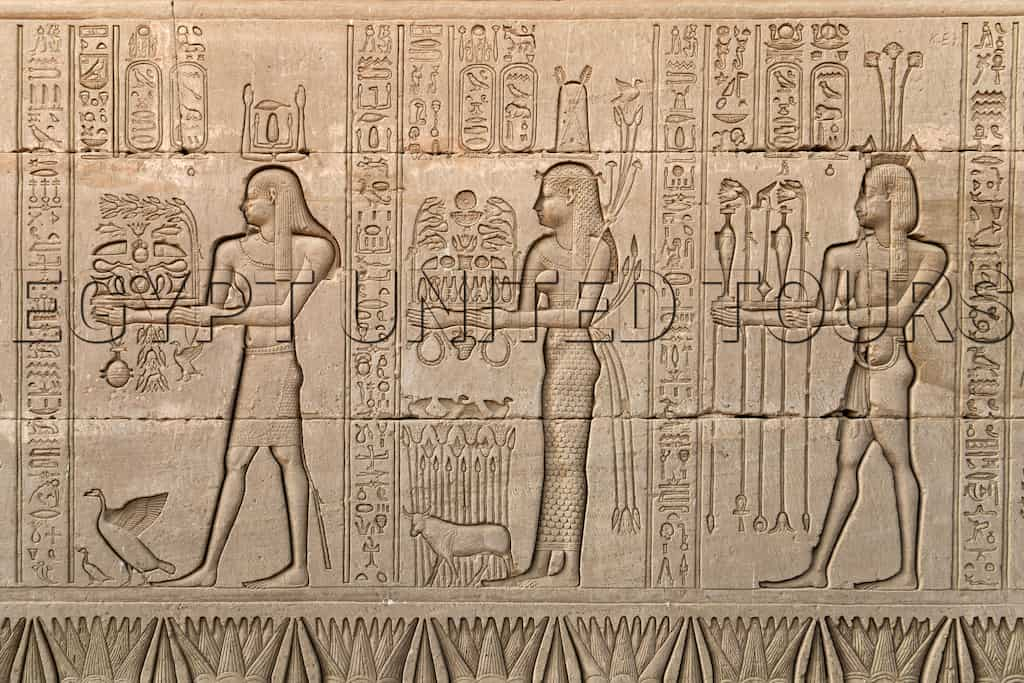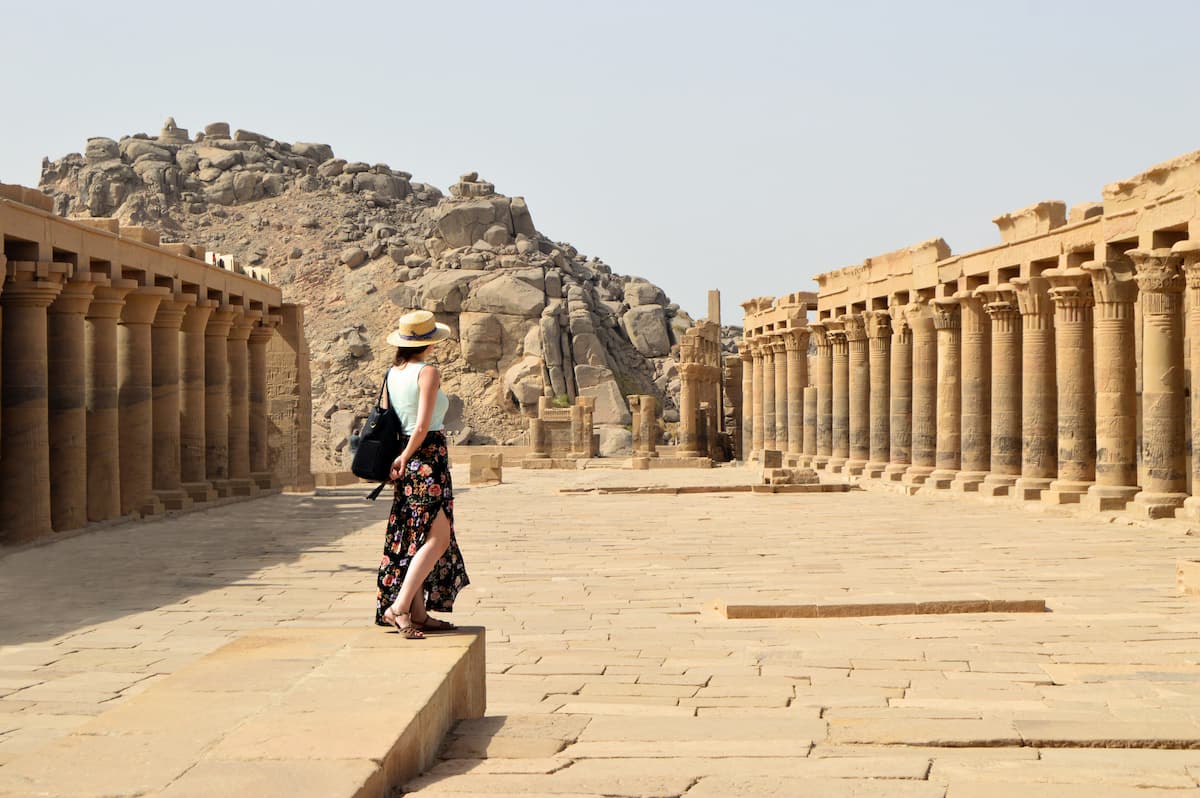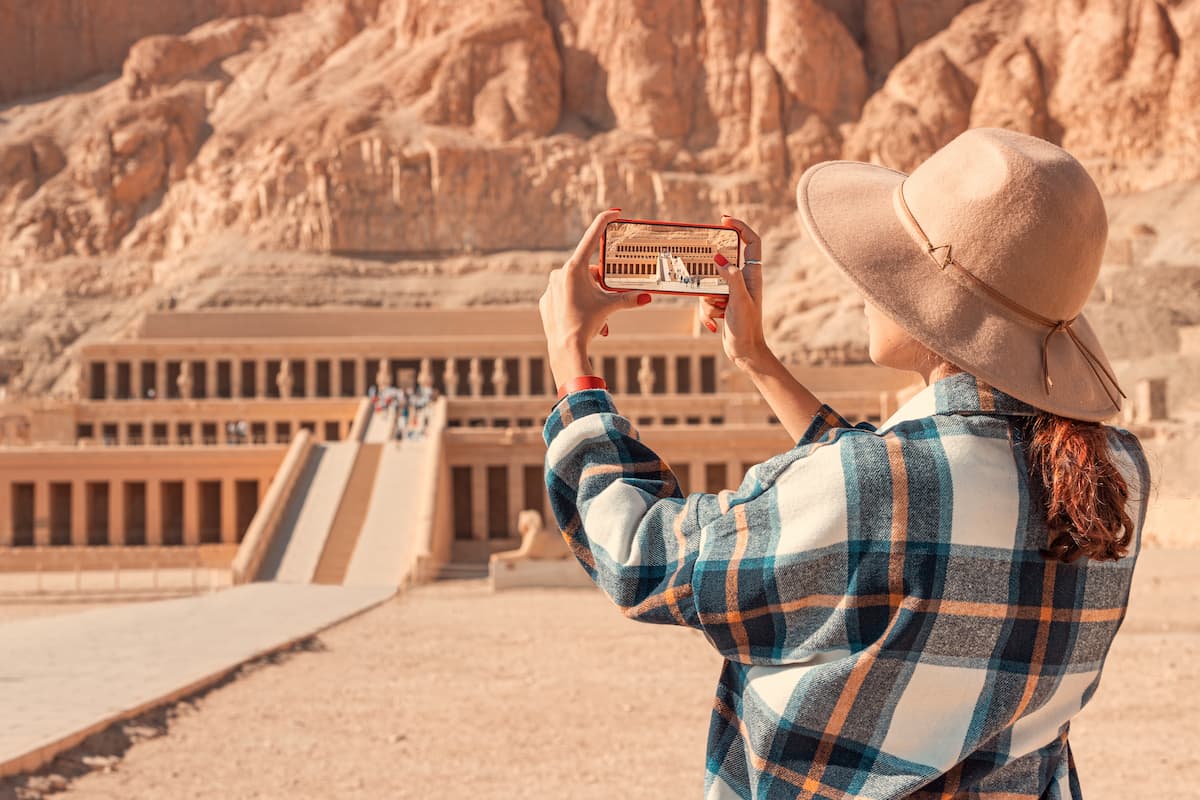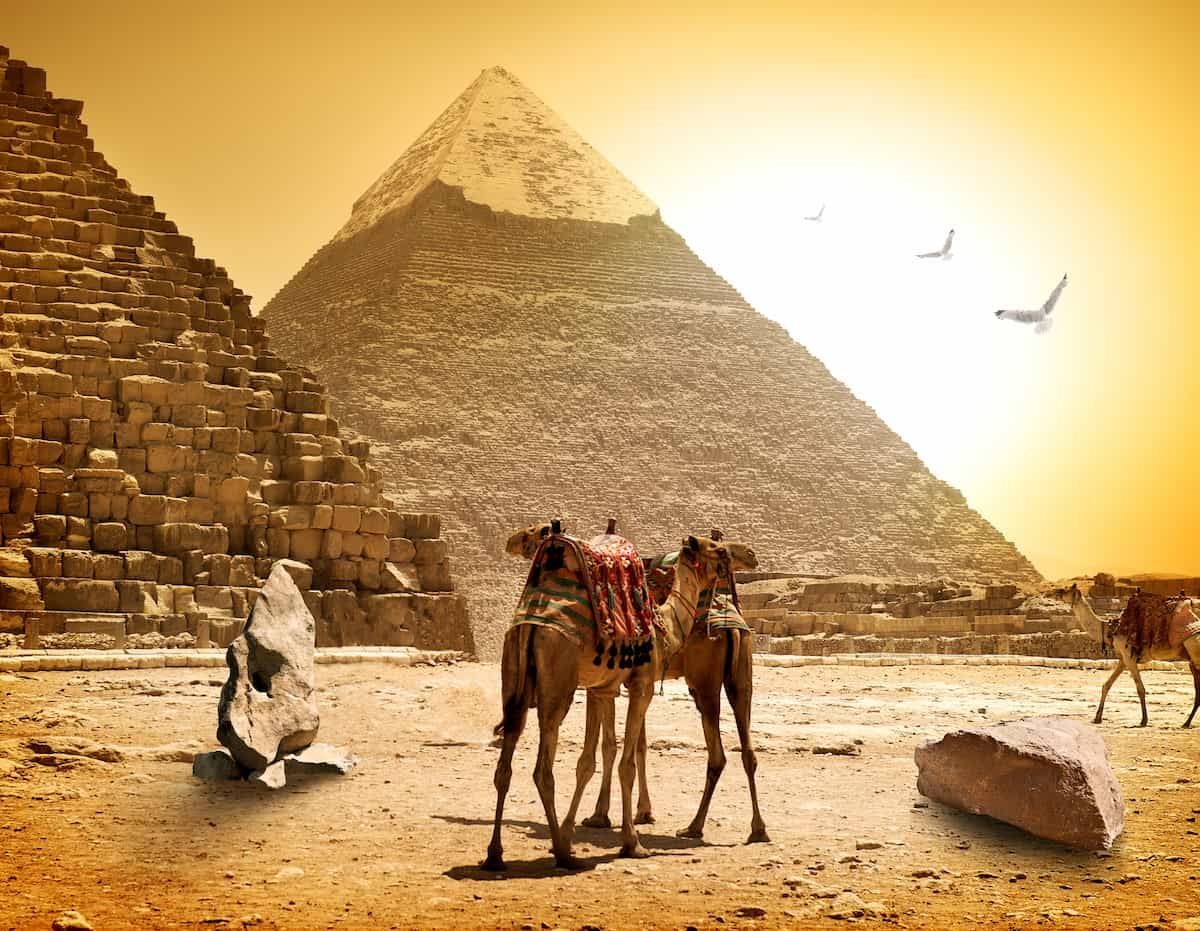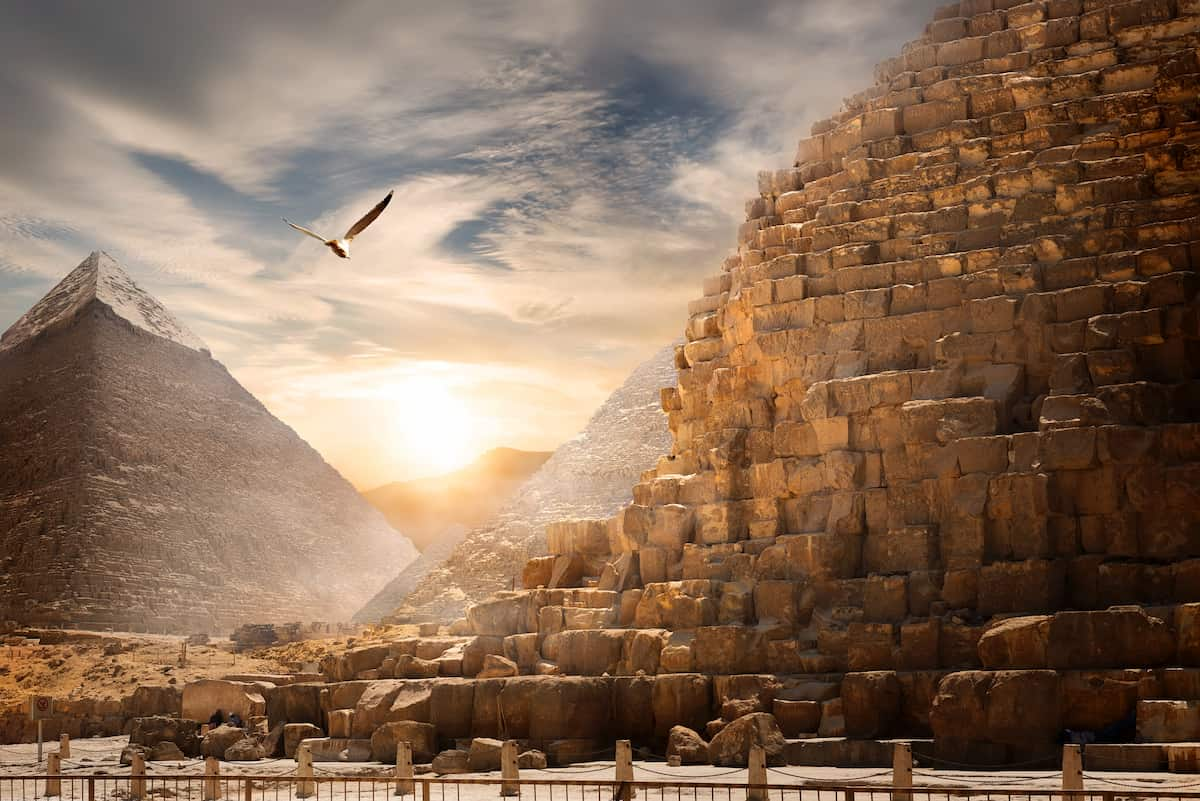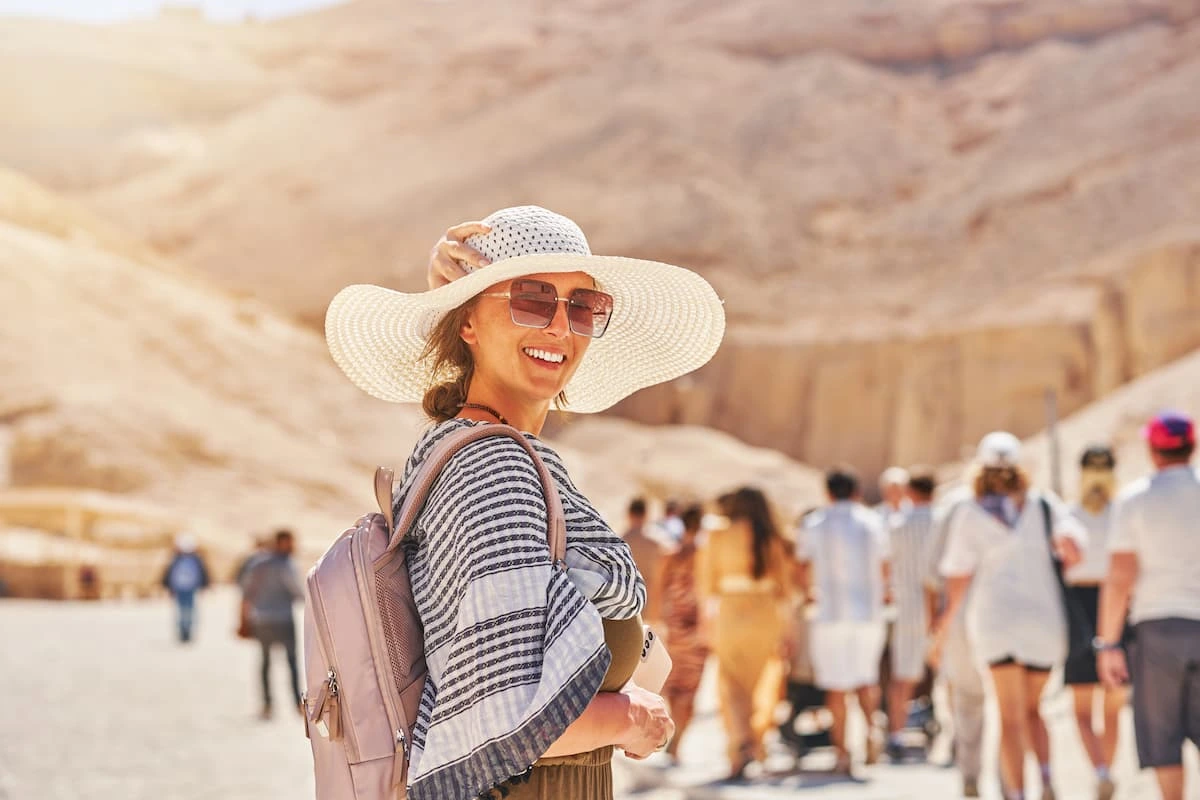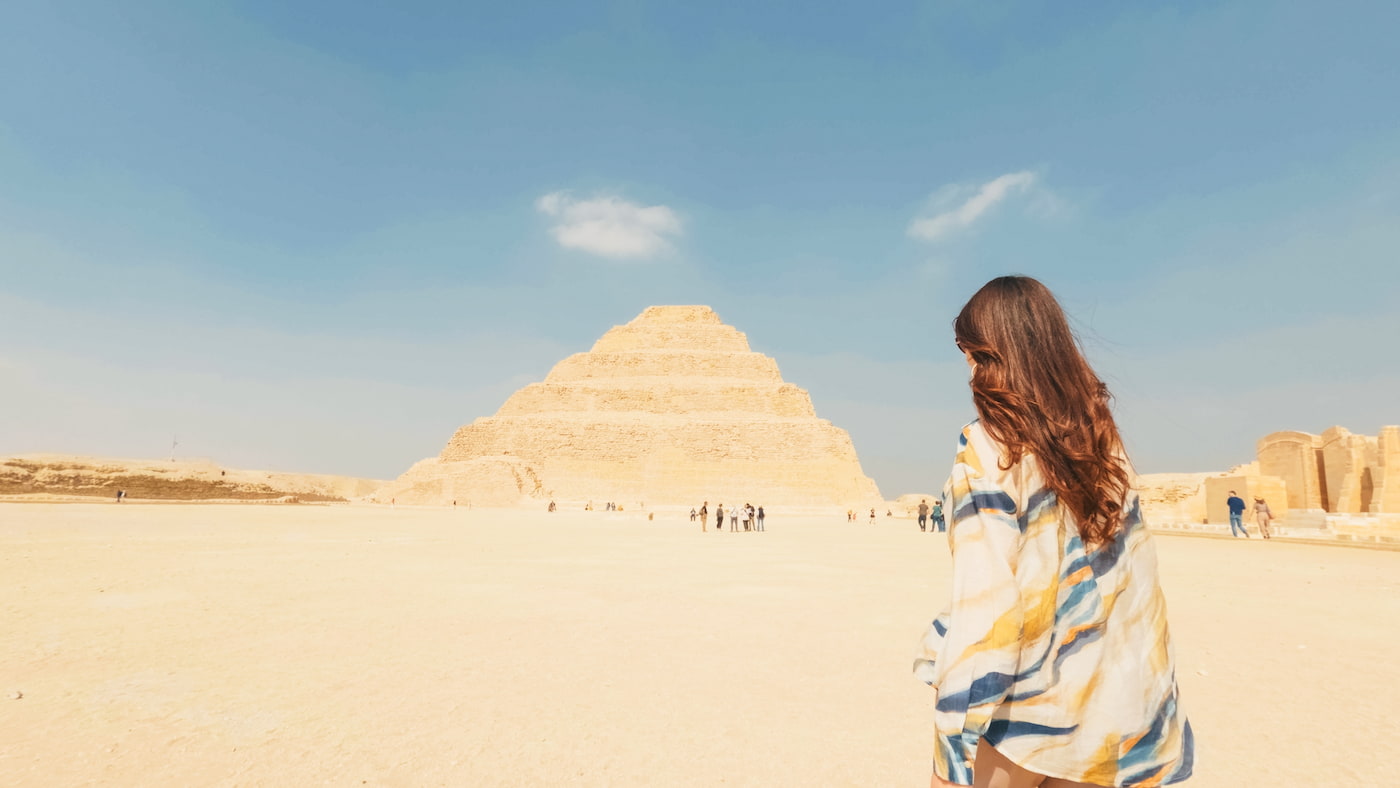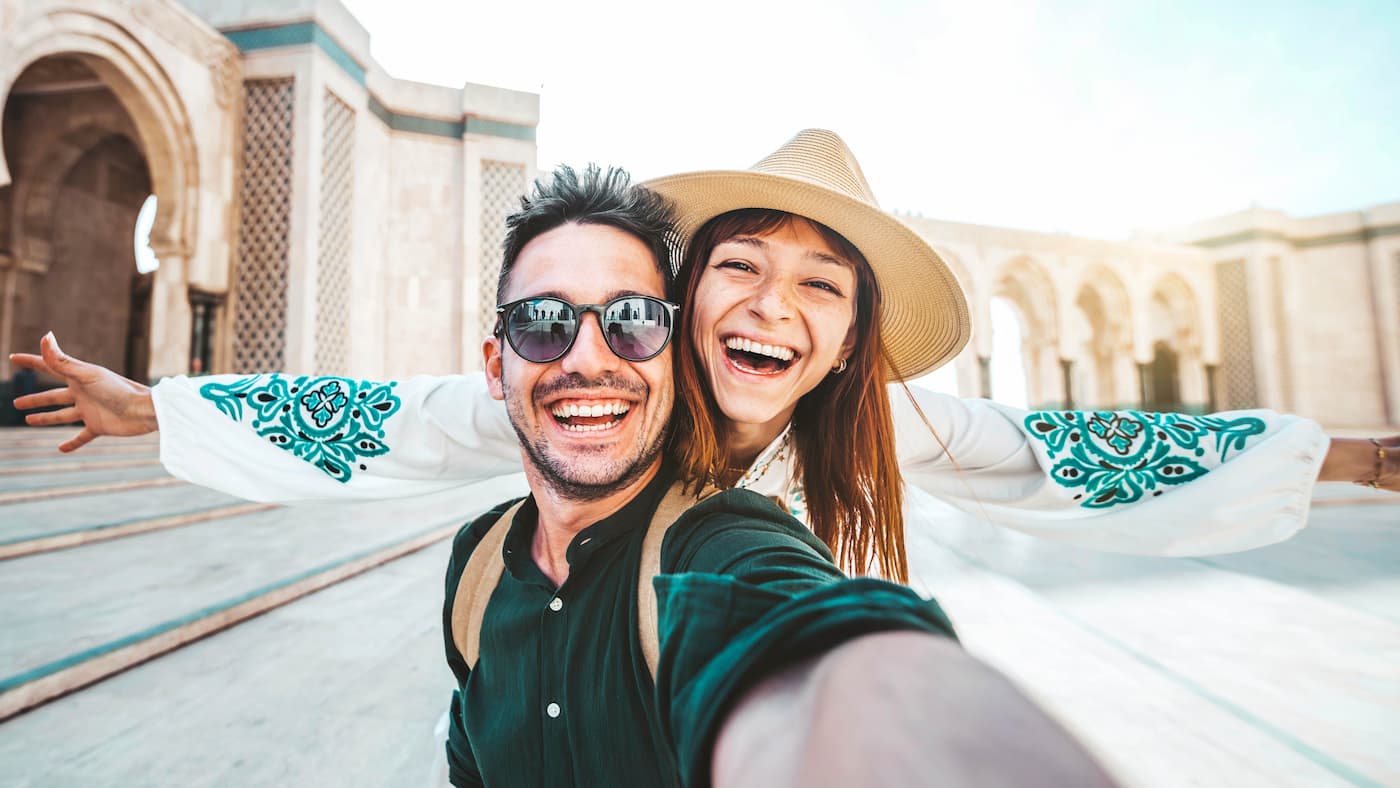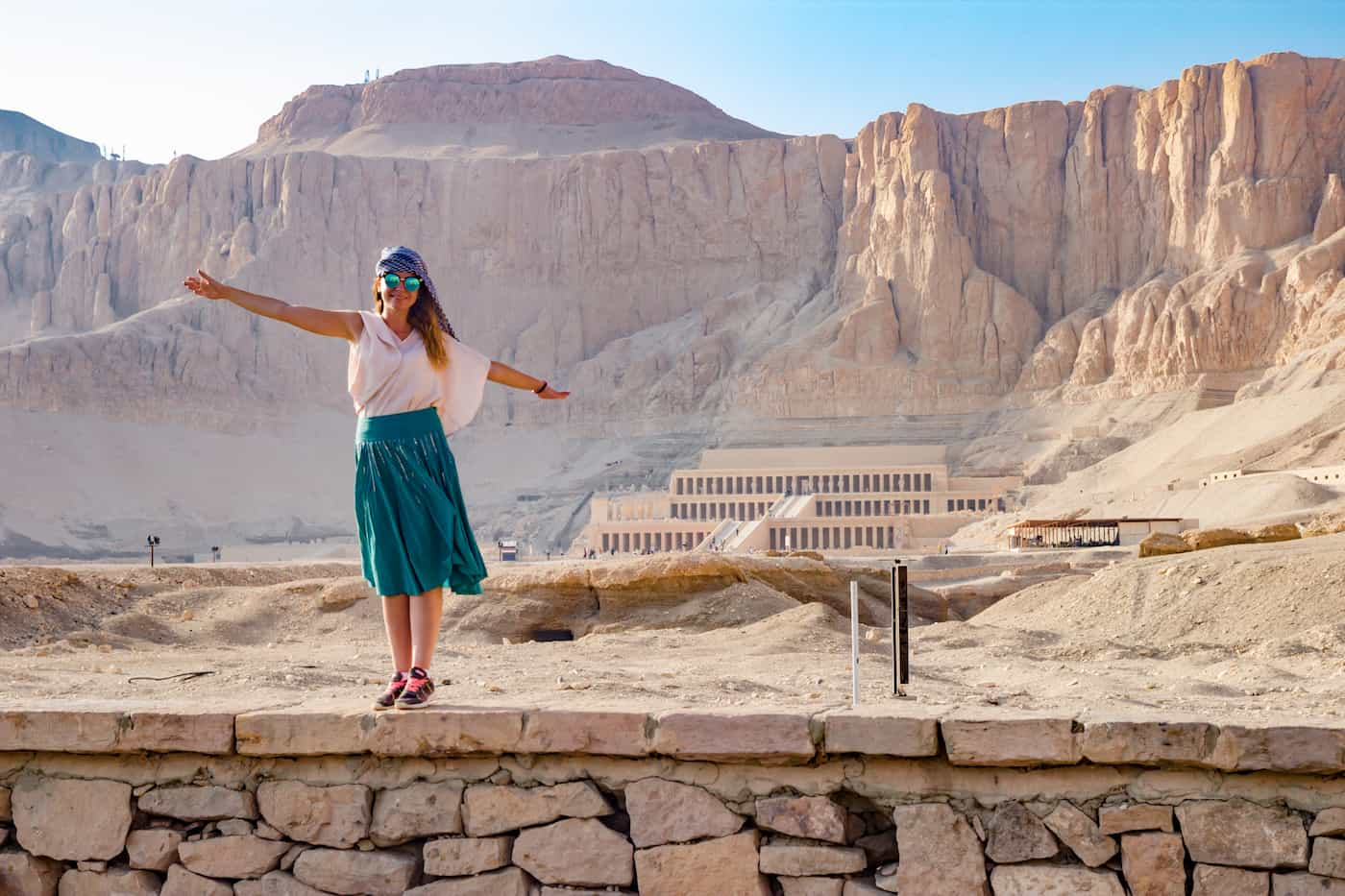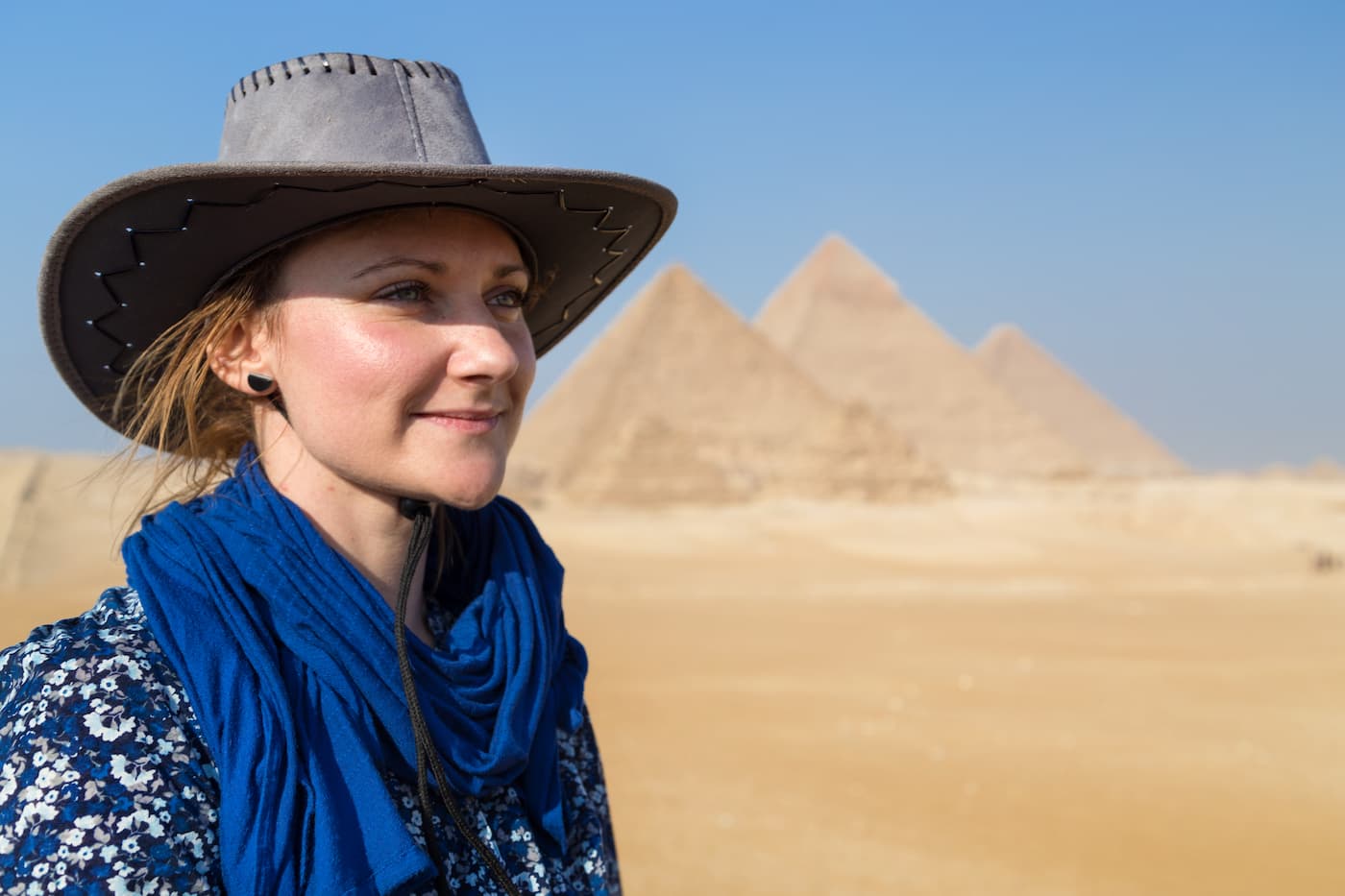The Ancient Egypt Foods in the Pharaonic Periods
No doubt food is a very important factor in shaping all cultures. In fact, Ancient Egypt foods played an amazing role to shape this wonderful civilization of Egypt. The Nile River rose each summer, beginning in July, flooding the low-lying plains on either side. Swollen by Ethiopia’s monsoon rains, it deposited a layer of black soil over the land, rich in nutrients needed for crop cultivation. On average, the river rose about 8 meters (27 feet). Disaster struck if it rose or fell 2.5 meters (8 feet). Villages were flooded when they raised too high, causing extensive damage and loss of life. When it did not rise sufficiently, the fields did not receive enough nutrients and moisture to support the crops, resulting in famine.
The ancient Egyptians ate from the floodplains’ diverse plant and animal life. Most people farmed. Farmers stopped canals to hold irrigation water in mid-September when flood waters receded.7

The Ancient Egyptian Foods and Drinks
The most important Ancient Egyptian foods and drinks were, Barley and emmer, and the emmer baked into bread and barley into beer. Collect the grains and keep them in granaries until they were ready to be processed. Every season’s harvest vastly outpaced domestic needs, leading to a boom in foreign exchange for the Egyptian government through the sale of surpluses to nearby countries.
The Ancient Egyptian food list
Vegetables
The ancient Egyptians loved garlic, which was one of the most popular vegetables and also had medicinal properties. Onions, leeks, lettuces, celery (used raw or to flavor stews), cucumbers, radishes, and turnips were plentiful, as were gourds, melons, and papyrus stalks. They obtain protein from pulses and legumes such as peas, beans, lentils, and chickpeas.
Meat
The meat was considered a luxury cuisine in ancient Egypt and was not commonly consumed. The wealthy would eat pork and mutton. The beef was considerably more expensive, and it was only consumed on special occasions.
Hunters were able to catch a variety of wild wildlife, including cranes, hippos, and gazelles. Ancient Egyptians might even enjoy mice and hedgehogs if they were looking for something smaller. Hedgehogs would be cooked in clay, which would then split open, taking the thorny spikes with it.
Fruits
The fruit was more seasonal than the vegetables. Dates, grapes, and figs were the most frequent fruits. Figs were popular due to their high sugar and protein content, whilst grapes could be dried and preserved as raisins.
Dates would be eaten fresh or used to ferment wine or as a sweetener. There were also nabk berries, certain Mimusops species, and pomegranates. Coconuts were an imported luxury commodity that only the elite could buy. Honey is the most valuable sweetener, and it is used to sweeten bread and cakes.
Herbs and spices
Spices and herbs utilized by the ancient Egyptians for flavor included cumin, dill, coriander, mustard, thyme, marjoram, and cinnamon. Most spices are imported and hence too expensive to be utilized outside of the wealthy’s kitchens.
Types of Food in Ancient Egypt
What are the Ancient Egyptian foods for common people?
Beer and Bread are Ancient Egypt’s Staples.
Basically, bread was the Egyptian diet’s mainstay. The first wish of every tomb owner from those still alive passing by the grave was 1,000 loaves of bread. Beer is a component of the ancient Egyptian diet. Men, women, and children all drank beer. Although children were introduced to beer consumption at a young age.
On the other hand, Beef was a high-status meat, and it’s likely that only the wealthy ate it on a regular basis in ancient Egypt. Others would have had access to it during religious festivals and holidays when temples redistributed offerings to the gods impoverished. Nearly thirty cuts of cattle were classified by the Egyptians. The foreleg is the most valuable and is shown in tomb paintings as being offered to the tomb owner.
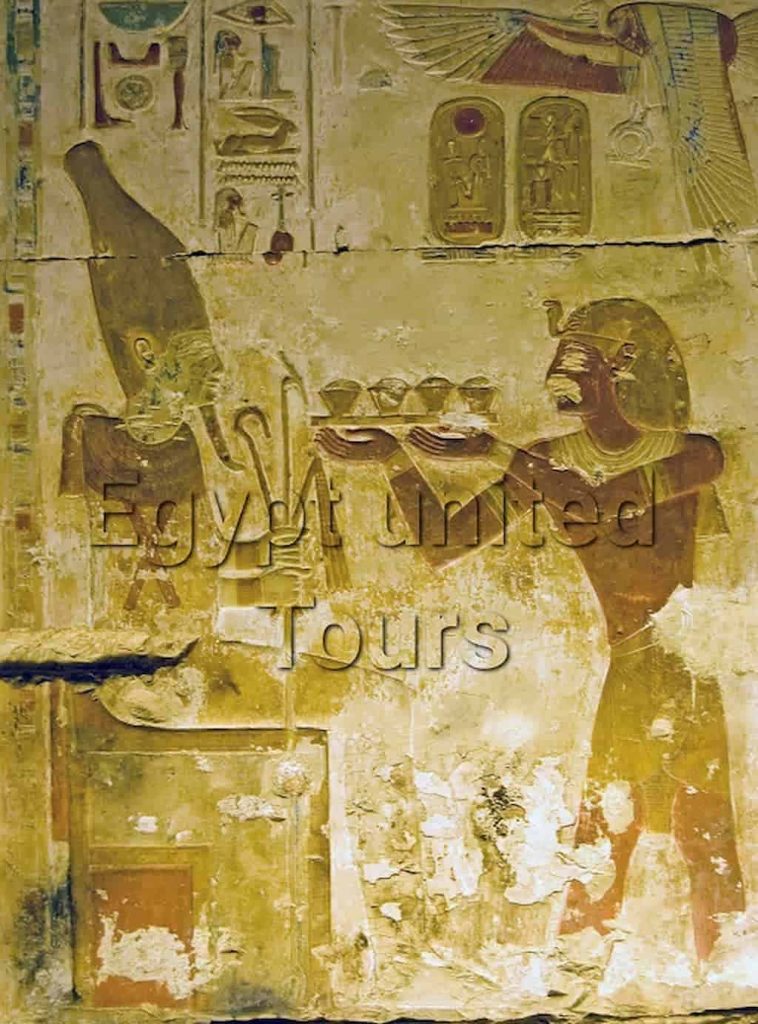
Ancient Egyptian Foods for Kings
In fact, Kings enjoyed a varied and delicious meal of meat, fruit, vegetables, and honey-sweetened cakes paired with the greatest wines, while the poor stuck eating the same old bread, fish, beans, onions, and garlic and washing it all down with a sweet, soupy beer.
Recreational hunting, fishing, and fowling journeys were popular among Pharaohs and other nobility, and they often had religious importance. Kings’ and nobles’ might is often emphasized through depictions of hunting on temple walls and tombs. Various predators pursued their flesh and skins, including rabbits, deer, gazelles, bulls, oryxes, antelopes, hippopotamuses, elephants, and lions.
Tutankhamun goes on a bird hunt with the help of his wife in the Nile Delta‘s wetlands. The bow’s aft end and the arrow’s butt are hidden behind his head, as is customary in such depictions. As he relaxes with his tamed lion at his feet on a folding seat, he rests his left arm in a leather brace designed for archers. Vultures represent foes in the realm of the gods, therefore the presence of one above the king’s head suggests that this is a ritual hunting scenario.
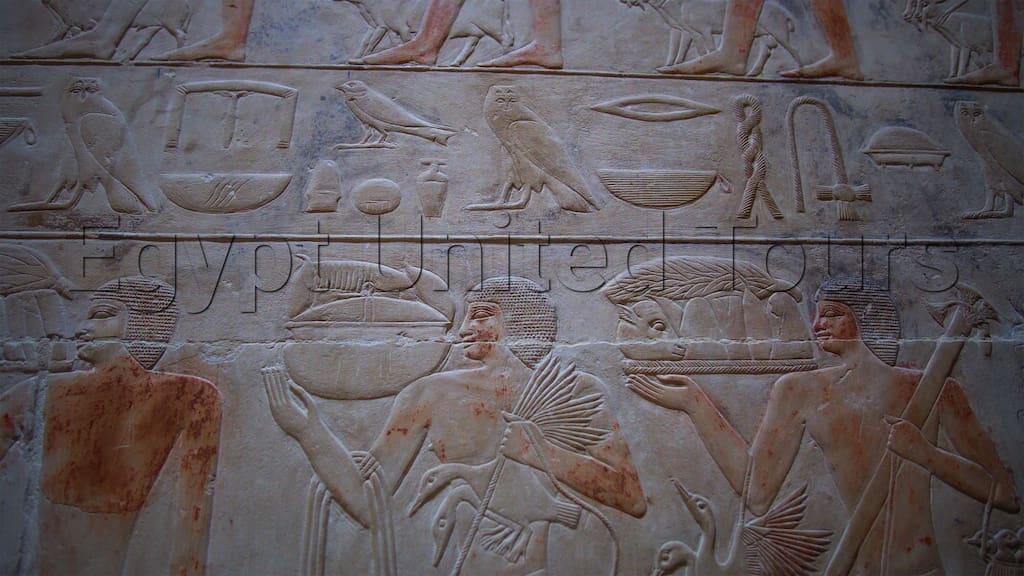
Ancient Egypt Food for Gods at the Temples
The Gods’ food in ancient Egypt and the various cuisines considered worthy of the gods are depicted in paintings and inscriptions on tomb and temple walls. The walls of Karnak Temple show that Amun-Re ( he appeared as a fertility god) liked vegetable and fresh flower gifts. Hathor gives alcohol to soothe her aggressive side and because she was the goddess of music, love, and dance. Horus, the child, was given milk. These individualized presentations were accompanied by menus that could have included cattle and gazelle roasts, ducks, game birds, various vegetables and fruits, bread, cake, beer, wine, and milk. The concept of the “meal of the gods” evolved as a result of such an exchange.
The pharaoh offered certain delicacies to satisfy the gods through the priests. Food sacrifice is one of the daily rituals conducted to keep Egypt in a condition of MAAT or divine order.
Daily Offering in Temples
Basically, each morning, temple employees started preparing for the daily offering. Every step of the preparation is meticulously monitored to ensure that no mistakes are made. The kitchens baked fresh bread and pastries in a variety of shapes, roasted beef, wild animals, and ducks, prepared vegetables and fruits, and brewed the highest quality beer. Each set of food was cleaned with water, natron, and burning incense before being served to the gods.
On the other hand, Food carriers carried platters piled high with various types of food and placed them in front of the god’s shrine on offering tables. When the shrine is open, a selection of food from each tray is arranged on a special serving dish and presented to the god’s cult statue. Except for the loaves of bread, which remained on the offering table until the next morning when they repeat the procedure, later, the food dispersed among the priests. Fish is the only food item that is never served to the gods.
There are two views as to why fish is not considered divine food. One theory holds that fish is sacrosanct to the gods: a pair of fish, Abu, and Ant, swam on either side of the sun god Re’s boat as it sailed through the Underworld to fend off evil spirits. Another theory is that once the god Osiris is disme, his phallus is through into the Nile and the fish eat them.
